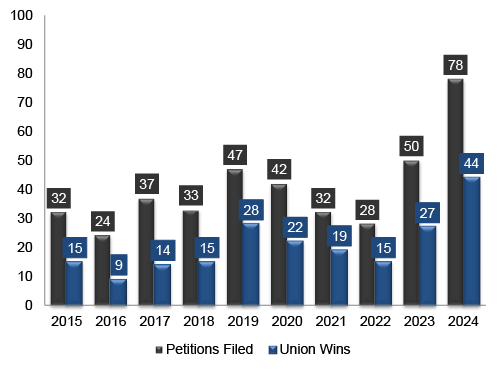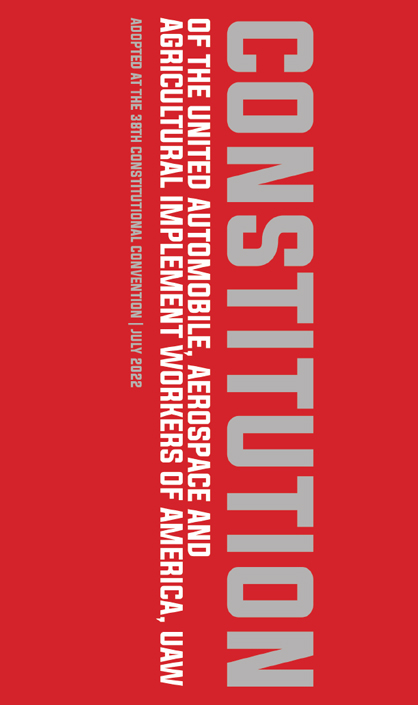At its peak, UAW had over 700,000 members. Fast forward to today and the UAW has lost nearly half of its membership and now has fewer than 400,000 members.
UAW Membership
Click the sections below to learn more.
The International Union, United Automobile, Aerospace and Agricultural Implement Workers of America, or more commonly known as the United Auto Workers, (UAW) formed in Detroit, Michigan in 1935.
Over the next 35 years, UAW increased its membership and its notoriety through infamous sit-down strikes against General Motors, Chrysler, and the Ford Motor Company. UAW has a history of strikes and high-profile failed attempts at unionization. It all adds up to a significant loss of membership and power.
UAW is trying to increase its membership through organizing campaigns.
The union has filed 403 representation petitions for election with the NLRB in the last 10 years. However, UAW has only won half the time.
UAW Petitions for Representation

Source: Bloomberg Law analysis of Department of Labor data, 2025.
Since 2015, 2,395 unfair labor practices (ULPs) have been filed against UAW for everything from “coercive actions,” to “duty of fair representation” and even “coercion, including statements and violence.”
Unfair Labor Practice Charges Filed Against UAW

Source: Bloomberg Law analysis of Department of Labor data, 2025.
What It Means to be a UAW Member

View & download the UAW Constitution
UAW's rules and regulations govern and control the activities of the employees it represents (including those covered by UAW-affiliate unions, such as those representing Caltech graduate students and trying to represent JPLers) both on and off the job. The union defines that control in writing, in very critical documents – the union constitution and its by-laws.
Click on the sections below to learn more.
“The International Union and the Local Union to which the member belongs shall be their exclusive representative for the purpose of collective bargaining in respect to rates of pay, wages, hours of employment or other conditions of employment; and for the negotiation and execution of contracts with employers covering all such matters, including contracts requiring membership or the continuance of membership in the Union as a condition of employment or continued employment; and contracts requiring the employer to deduct, collect, or assist in collecting from their wages any dues, initiation fees, reinstatement fees, payable to the International Union or their Local Union.”
— Article 6, Section 15
There are several pages dedicated to explaining what happens to union members who break any of the union rules, including being charged, tried and possibly suspended. The union spells out the ‘Trials of Members’ process of members who violate their constitution, including members who try to get rid of the union.
“Whenever it is charged that a member is affirmatively engaged in the promotion, implementation, furtherance or support of any other union or collective bargaining group with the purpose or intent of supplanting the International Union, or any subordinate body thereof, as the recognized collective bargaining agent, or if the member is affirmatively engaged in efforts to decertify the International Union or any subordinate body thereof as the recognized collective bargaining agent… The member shall be subject to suspension or expulsion by the International Executive Board after hearing on such charges…”
— Article 31, Section 24

